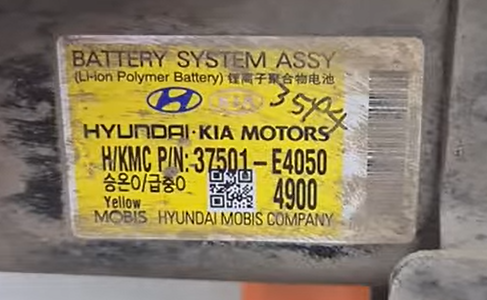Kia SOUL EV – Our favorite EV is stuck in the throes of extreme degradation and just when you think you need a new battery, our EVC lab becomes your salvation because we repair it on component level by changing cells. The vehicle that was previously driven in hot Spain left a mark on the battery cells, which apparently damaged almost half of the battery system due to poor cooling and high operating temperatures. The story here is deeper than the degradation of the battery itself, because there is also the “degradation” of the KMAG user experience, which has become extremely unfriendly in terms of conditions and fulfillment of warranty requirements. Here, the warranty on the battery, which is still active, was completely unjustified declined, because the service book (wtf is service book for EV) is missing. The already familiar story with KMAG, where we witnessed several times the rejection of the warranty for completely unfounded reasons, for example by asking for the invoice of some first service and similar “strange” stories where they tied the general warranty to the warranty of the drive system which is extremely stupid and invented just to be the reason to reject warranty. But where KMAG “bendovers you”, EV Clinic try to save you. With a short run-in test, we isolated the worst cells of the “first layer refurbish”, replaced them with LGX cells from the Hyundai Ioniq, given to us by our colleague Peter from Slovenia and a colleague from France with almost new SK Innovative cells. We had enough to repair half a battery pack. We changed all the upper “overheated” cells and made the first test, which under the new “second layer refurbish” showed an additional 8 groups in bad condition. The third layer and the test showed that the complete group 1-14 under the passenger side is extremely bad and we decided to change the complete block by changing all cells. Through the tests, we had from the initial 50 km of range, to the 85, 105 and then at the last 118 km of range, which brought the condition of the battery to a usable state for use in the next 1-2 years, where we can only hope that some aftermarket solution for cells with approximately the same dimensions will come out. Because dimension of cells about 10.5 mm is the decisive factor.
In the second layer, we had only 19 kWh of the declared 28 kWh on measurement, which is about 65% SOH or 35% Degradation. In the last “layered refurbish”, we measured a usable 22kWh, which is about 75% SOH or 25% degradation, which is a big change in any usable case. We will remove the vehicle from the list of recommendations and suggest Kia NIRO EV, which has Active thermal control with antifreeze and coolant plate with same cells.



































